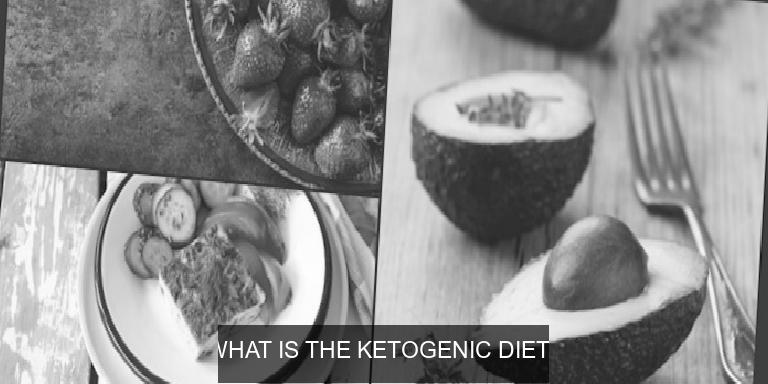WHAT IS THE KETOGENIC DIET?
Obesity, diabetes, cardiovascular diseases and mental health deterioration have been declared the world’s biggest health problems by the World Health Organization. Moreover, unfortunately, in today’s world, it is getting harder and harder to reach healthy foods in the hustle and bustle of modern life.
Expert Dietitian Merve Karademir told us both the basics of the ketogenic diet and the original cheese, gluten-free and organic ketogenic menu of 90fit, which those who try it cannot give up, which is not found in other ketogenic diets.
MANUALLY: What are the basics of the ketogenic diet?
MERVE KANDEMIR: The foundation of the ketogenic diet is based on high fat, low carbohydrate and ideal protein consumption. The main aim is to meet the basic power requirement of the body only from fats by consuming a lot of healthy fat sources, on the contrary of a lean diet. In other words, it is the realization of what we call ‘ketosis’.
MANUALLY: Which foods stand out in this diet? Can snacks such as popcorn, oatmeal, and yogurt be eaten?
MK: In the ketogenic diet, foods with high healthy fat content are at the forefront in order to provide 70 percent fat sources. In the ketogenic diet as a source of healthy fat; Meat-chicken-turkey-fish-eggs-flax seeds, chia seeds, raw hazelnuts, raw almonds, raw pumpkin seeds, sunflower seeds, walnuts, oil-seeds such as coconut and oil-olive oil-butter should be used every day. As a source of carbohydrates, only green and white (except root vegetables) vegetables are very valuable. Since consumption of popcorn, oats and yogurt will exceed the daily amount of carbohydrates, I do not recommend consuming them. High-fiber carbohydrate sources from vegetables and some fruits complete the daily intake.
The ketogenic diet, which is quite rich in terms of foods that can be consumed, can be made quickly by those who prefer it in this sense. As a matter of fact, the only food that those who prefer a ketogenic diet miss is “cheese”. Or let’s just say it was happening… Because 90fit dietitians brought an irresistible innovation in this regard and produced a menu that includes hard cheeses, as well as gluten-free and organic. This menu, which is preferred again and again by those who try, can be found as the “4P Ketogenic Package”.
MANUALLY: So what is Ketosis, is it a wasteful thing?
MK: Ketosis is the body’s use of fat as its primary power source. The body in ketosis produces ketone bodies, which are small power molecules. Ketone bodies are produced in the body by consuming less carbohydrates, ideal protein, and using fat in the liver. In the absence of glucose, the building block of carbohydrates, ketones are used as power in the body. As a result, the work of organs and metabolism is provided by fats.
In particular, ‘ketosis’ and ‘ketoacidosis’ are often confused with each other. Ketoacidosis is one of the undesirable conditions that occur with excessive accumulation of ketones in the body. This is a condition caused by high blood sugar, and severe acidosis, that is, a decrease in blood PH is observed. Ketoacidosis is not expected in a healthy and accurate ketogenic diet. The state of ketosis, on the other hand, is the power generation that occurs naturally when a ketogenic diet is applied, and it has been seen in scientific studies that it is necessary, not wasteful. The formation of ketone bodies in ketosis does not occur due to high blood sugar, it occurs due to low blood sugar and acidosis is not observed.
MANUALLY: What are the possible risks of the ketogenic diet? Is it healthy in the long run?
MK:As in every diet, it should be done under the supervision of a nutritionist in a special and personalized time, so that there are no health risks in the ketogenic diet.
MANUALLY: Is the ketogenic diet a faith diet? Who can apply?
MK: It is solid for many people because of its scientifically proven health benefits. It can be applied as nutritional therapy in epilepsy, metabolic syndrome, polycystic ovary, and some types of cancer. In addition to this, it is a diet applied to healthy individuals, those who have been struggling to lose weight for a long time, and those whose metabolism has slowed down. For example, Harvard University in the USA, one of the most valuable universities in the world, recommends the ketogenic diet for those who say ‘I have tried every way and cannot lose weight’.
7 FRUITS YOU CAN CONSUME IN A KETOGENIC DIET!
Avocado: Half of an avocado contains only 15 grams of healthy fat, as well as less than two grams of carbohydrates, according to the USDA’s National Nutrient Information Base. By adding avocado to sauces, salads, meals, and smoothies, you can easily consume all meals. For those on a ketogenic diet, you can consume Guacamole sauce made with Avocado alongside your meats or as a sauce in your breakfasts.
Olive: Do you know that the indispensable fruit of the ketogenic diet is olive? Ten small olives contain about 3 grams of fat and 1.5 grams of net carbohydrates.
Coconut: One half cup of shredded coconut contains 13 grams of fat and 2.5 grams of net carbs. Packaged coconuts may have added sugar content. Therefore, be careful to consume coconut raw.
Blackberry: We can say that blackberry, which contains high amount of fiber, is the sweetest fruit of the ketogenic diet. A quarter cup of blackberries contains about two grams of fiber. In addition, this size of blackberries contains about 1.5 g of net carbohydrates. If you want a fresh breakfast while on a ketogenic diet, chia pudding with blackberry almond milk is for you!
Raspberry: A quarter cup of raspberries has 1.5 grams of net carbs. For this reason, it is another sweet indispensable fruit in the ketogenic diet with its low carbohydrate content.
Strawberry: A quarter cup of strawberries contains close to two grams of carbohydrates. Therefore, it can be preferred on the ketogenic diet.
Lemon: Lemon is another fruit that can be used in the ketogenic diet. You can easily use it in salads, drinks, meals, and water.
Click for summer detox.




